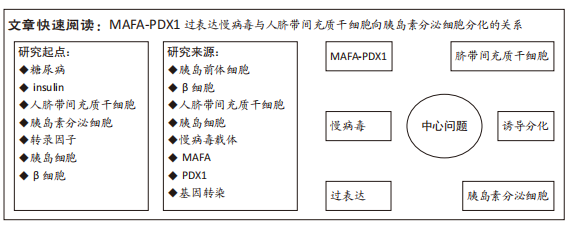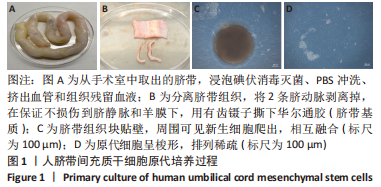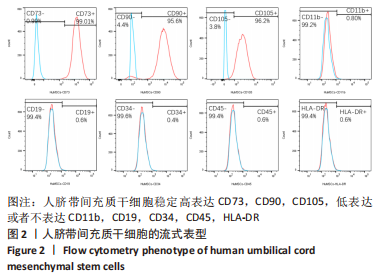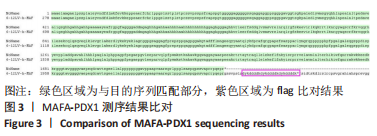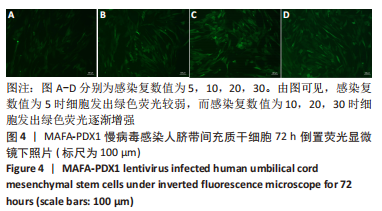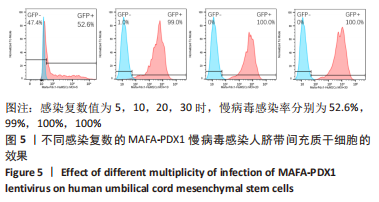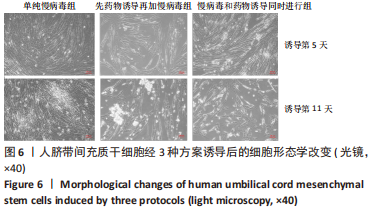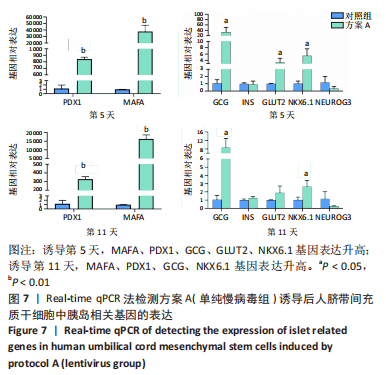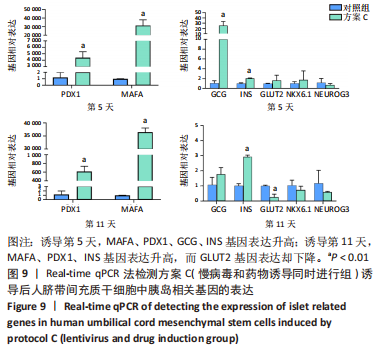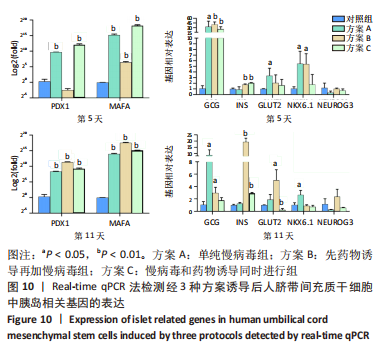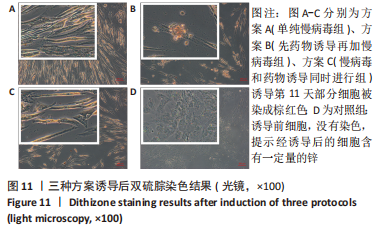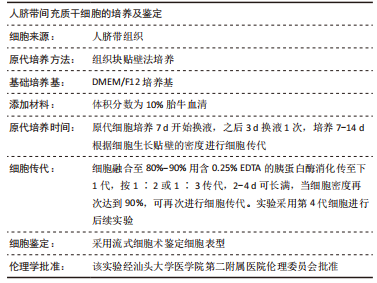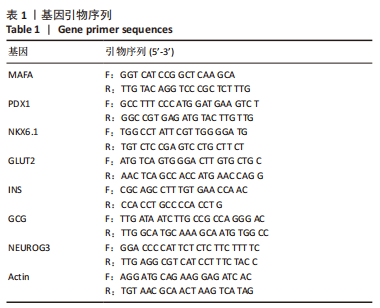[1] PUNTHAKEE Z, GOLDENBERG R, KATZ P. Definition, Classification and Diagnosis of Diabetes,Prediabetes and Metabolic Syndrome. Can J Diabetes. 2018;42 Suppl 1:S10-S15.
[2] HARREITER J, RODEN M. Diabetes mellitus-Definition,classification, diagnosis, screening and prevention (Update 2019). Wien Klin Wochenschr. 2019;131(Suppl 1):6-15.
[3] HELMAN A, MELTON DA. A Stem Cell Approach to Cure Type 1 Diabetes. Cold Spring Harb Perspect Biol. 2021;13(1):a035741.
[4] QUISKAMP N, BRUIN JE, KIEFFER TJ. Differentiation of human pluripotent stem cells into β-cells: Potential and challenges. Best Pract Res Clin Endocrinol Metab. 2015;29(6):833-847.
[5] DING DC, CHANG YH, SHYU WC, et al. Human umbilical cord mesenchymal stem cells: a new era for stem cell therapy. Cell Transplant. 2015;24(3):339-347.
[6] XIE Q, LIU R, JIANG J, et al. What is the impact of human umbilical cord mesenchymal stem cell transplantation on clinical treatment? Stem Cell Res Ther. 2020;11(1):519.
[7] LI T, XIA M, GAO Y, et al. Human umbilical cord mesenchymal stem cells: an overview of their potential in cell-based therapy. Expert Opin BiolTher. 2015; 15(9):1293-306.
[8] BI S, NIE Q, WANG WQ, et al. Human Umbilical Cord Mesenchymal Stem Cells Therapy for Insulin Resistance: A Novel Strategy in Clinical Implication. Curr Stem Cell Res Ther. 2018;13(8):658-664.
[9] XIAO X, GUO P, SHIOTA C, et al. Endogenous Reprogramming of Alpha Cells into Beta Cells, Induced by Viral Gene Therapy,Reverses Autoimmune Diabetes. Cell Stem Cell. 2018;22(1):78-90.e4.
[10] ZHU Y, LIU Q, ZHOU Z, et al. PDX1, Neurogenin-3, and MAFA: critical transcription regulators for beta cell development and regeneration. Stem Cell Res Ther. 2017;8(1):240.
[11] ANGUELA XM, HIGH KA. Entering the Modern Era of Gene Therapy. Annu Rev Med. 2019;70:273-288.
[12] MILONE MC, O’DOHERTY U. Clinical use of lentiviral vectors. Leukemia. 2018; 32(7):1529-1541.
[13] WANG X, MA C, RODRÍGUEZ LABRADA R, et al. Recent advances in lentiviral vectors for gene therapy. Sci China Life Sci. 2021;64(11):1842-1857.
[14] MUNIS AM. Gene Therapy Applications of Non-Human Lentiviral Vectors. Viruses. 2020;12(10):1106.
[15] AKINCI E, BANGA A, GREDER LV, et al. Reprogramming of pancreatic exocrine cells towards a beta (β) cell character using Pdx1, Ngn3 and MafA. Biochem J. 2012;442(3):539-550.
[16] JENNINGS RE, BERRY AA, STRUTT JP, et al. Human pancreas development. Development. 2015;142(18):3126-3137.
[17] JENNINGS RE, BERRY AA, KIRKWOOD-WILSON R, et al. Development of the human pancreas from foregut to endocrine commitment. Diabetes. 2013;62(10):3514-3522.
[18] HENRY BM, SKINNINGSRUD B, SAGANIAK K, et al. Tomaszewski KA. Development of the human pancreas and its vasculature - An integrated review covering anatomical, embryological, histological, and molecular aspects. Ann Anat. 2019; 221:115-124.
[19] PETERSEN MBK, GONÇALVES CAC, KIM YH, et al. Recapitulating and Deciphering Human Pancreas Development From Human Pluripotent Stem Cells in a Dish. Curr Top Dev Biol. 2018;129:143-190.
[20] RUBIO-CABEZAS O, JENSEN JN, HODGSON MI, et al. Permanent Neonatal Diabetes and Enteric Anendocrinosis Associated With Biallelic Mutations in NEUROG3. Diabetes. 2011;60(4):1349-1353.
[21] SCHREIBER V, MERCIER R, JIMÉNEZ S, et al. Extensive NEUROG3 occupancy in the human pancreatic endocrine gene regulatory network. Mol Metab. 2021; 53:101313.
[22] SOLORZANO-VARGAS RS, BJERKNES M, WANG J, et al. Null mutations of NEUROG3 are associated with delayed-onset diabetes mellitus. JCI Insight. 2020; 5(1):e127657.
[23] MCGRATH PS, WATSON CL, INGRAM C, et al. The Basic Helix-Loop-Helix Transcription Factor NEUROG3 Is Required for Development of the Human Endocrine Pancreas. Diabetes. 2015;64(7):2497-2505.
[24] YONG HJ, XIE G, LIU C, et al. Gene Signatures of NEUROGENIN3+ Endocrine Progenitor Cells in the Human Pancreas. Front Endocrinol(Lausanne). 2021;12: 736286.
[25] LIU J, BANERJEE A, HERRING CA, et al. Neurog3-Independent Methylation Is the Earliest Detectable Mark Distinguishing Pancreatic Progenitor Identity. Dev Cell. 2019;48(1):49-63.e7.
[26] VERES A, FAUST AL, BUSHNELL HL, et al. Charting cellular identity during human in vitro β-cell differentiation. Nature. 2019;569(7756):368-373.
[27] ITOH M, TAKIZAWA Y, HANAI S, et al. Partial loss of pancreas endocrine and exocrine cells of human ARX-null mutation: consideration of pancreas differentiation. Differentiation. 2010;80(2-3):118-122.
[28] GAGE BK, ASADI A, BAKER RK, et al. The Role of ARX in Human Pancreatic Endocrine Specification. PLoS One. 2015;10(12):e0144100.
[29] RIEDEL MJ, ASADI A, WANG R, et al. Immunohistochemical characterisation of cells co-producing insulin and glucagon in the developing human pancreas. Diabetologia. 2012;55(2):372-381.
|
